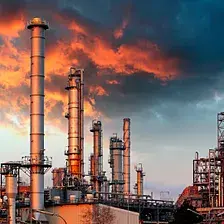cross-posted from: https://slrpnk.net/post/24690127
Solar energy experts in Germany are putting sun-catching cells under the magnifying glass with astounding results, according to multiple reports.
The Fraunhofer Institute for Solar Energy Systems team is perfecting the use of lenses to concentrate sunlight onto solar panels, reducing size and costs while increasing performance, Interesting Engineering and PV Magazine reported.
The “technology has the potential to contribute to the energy transition, facilitating the shift toward more sustainable and renewable energy sources by combining minimal carbon footprint and energy demand with low levelized cost of electricity,” the researchers wrote in a study published by the IEEE Journal of Photovoltaics.
The sun-catcher is called a micro-concentrating photovoltaic, or CPV, cell. The lens makes it different from standard solar panels that convert sunlight to energy with average efficiency rates around 20%, per MarketWatch. Fraunhofer’s improved CPV cell has an astounding 36% rate in ideal conditions and is made with lower-cost parts. It cuts semiconductor materials “by a factor of 1,300 and reduces module areas by 30% compared to current state-of-the-art CPV systems,” per IE.
Hey it’s those guys that invented MP3s.
Lossy compression of sunlight?
It really whips the sun’s ass.
That was Fraunhofer IIS not ISE.
Fraunhofer IIS and Fraunhofer ISE are part of the same organization.
They are different institutes in the same Fraunhofer Society.
I wonder what kind of concentrating optics they use. Simple Fresnel lenses won’t do, unless you closely follow the sunlight to stay in focus.
at this point it doesnt matter. theres no saving us from extinction due to climate change. this serves only for the intermediate period where we can “save” some money on energy day to day, before the inevitable collapse that makes money and savings worthless.
dont get me wrong, if i could afford a house, let alone additional panels and the additional fees that come with installation, maintenance, regulations, licensing, etc. then id be all in, even if it was just to contribute to the dying ideal that there was some semblence of hope for a better future. this is up to the landlords and the upperclass to give a shit about, and most of it is for grandstanding and keeping up with the joneses.
i used to install these for a living during covid. only people in my area who could afford them were multigenerational farmers and eco concious suburbanites. even for the suburbanites living in million+ dollar homes it was a stretch financially, and a hastle due to regulations.
good idea. but a bit late. we are at the point that if someone waved a magic wand tomorrow, and everyone stopped driving cars and pulled a full 180 on coal, oil, and gas, it would still be far too late.
if you can afford the inevitable markup that comes with proffessional installation. be my guest. if you are a poor person wanting to slap some panels on a tiny home, go nuts. just dont expect to save the world by doing so. its fucked. live how you want to while you can. drink, fuck, fight, eat good food, play video games, bed rot and consume to your hearts content.
nothing can save us. not even the “indomitable will of the human spirit” not a god damned thing.
sorry to shit in your salad. but thems the breaks.
Banned in North America in 3… 2…
They need changes in laws too. Instead of chewing up open space and farmland I’d rather see more urban areas used like parking lots and industrial sites.
Yeah, Don’t put the solar farms in meadows, or on mountains. put them on warehouse roofs, over highways, over parking lots, on government buildings, etc etc.
“The lens makes it different from standard solar panels that convert sunlight to energy with average efficiency rates around 20%, per MarketWatch. Fraunhofer’s improved CPV cell has an astounding 36% rate in ideal conditions”
Why would I want to compare one panel’s average efficiency to another panels efficiency in ideal conditions?
Marketing. Fresnel lenses are not going to do well with diffuse light.
Maybe I’m misunderstanding but wouldn’t diffuse light be what it’s going to be best at? While it’d be worse on a sunny day when there is an optimal single direction for the light to come in?
It’s the opposite of a light house fresnel lens - instead of scattering the light source evenly out, it’ll capture diffuse incoming rays from random directions better and concentrate it on the photovoltaic cell? However it would be at the cost of being able to capture direct sunlight efficiently as only some of the lens would ever be in the best position to capture the direct rays?
wouldn’t diffuse light be what it’s going to be best at? While it’d be worse on a sunny day when there is an optimal single direction for the light to come in?
No. Concentrated solar requires perfect alignment, dual axis tracking, to the sun. diffuse light does not concentrate.
A reasonable alternative design would be cheap ordinary PV cells with outward bubbles instead of inverted parabolas that would capture off axis light better on a fixed tilt.
How does concentrating the sunlight like this not start a fire? Or wouldn’t this at least cause panel electronics to overheat?
I would imagine they’re not concentrating maximally. Just enough to increase efficiency.
Remember gang, stuff like this means 10-15 years before you see it in market.
What was the stuff like this of 15 years ago ?
Honestly solar panels and electric cars. I know those existed over 15 years ago, but they weren’t serious market options until like 5 or so years ago.
First known electric car was built in 1837. Yes, 1837, not 1937. In 1910’s and 1920’s there were tens of thousands electric cars in USA and Europe. So electric cars has been here for a long time right now.
First (known) solar panel was built in 1954.
Yes, hence the name motor vehicle. His point was modern implementations of EVs and solar panels. 10-20 years is very common for transition to production. It takes time to scale up manufacturing and that’s only after the manufacturers have actually decided/agreed to take on the risk of a new product line. Lithium ion batteries were invented in the 80s, but didn’t see broad deployment until the 00s.
More expensive and less efficient.
I am not a scientist so please correct me if I am off base, but did it really take them this long to attempt to focus light onto PV cells using a fresnel lens?
My hobby as a 15 year old was buying broken projectors to harvest the fresnel lenses in the lamp on top. They could focus sunlight so powerfully that you could burn shit. I didn’t do that, surprisingly. I was like Marge Simpson, I just thought they were neat.
Adding to what the others wrote, solar cells become less efficient at power conversion (light -> electricity) as the temp of the solar cell materials (semiconductors) increases. So the issues is how to get more photons to the semiconductor without heating it up.
Would a UV filtering lens help? Do solar cells generate more power from certain parts of the light spectrum?
With one layer the case is simple. There is a certain light energy at which the conversion of light to current occurs called gap energy. If the light energy is lower than that no conversion can happen and if the light energy is higher the extra energy is converted to heat and only gap energy remains.
Filtering UV would be a loss but a small one.
OK, take that Fresnel lens that you were using to melt pennies and then focus it on a PV cell that is also made of metal. What might be the expected response? The science in this case is making PV cells that can handle the intense heat.
That makes sense. If I understood everyone clearly, it’s not the idea to use a fresnel that’s new here, it’s the fact that we just haven’t yet had anything capable of withstanding those temperatures and still allowing for the piezoelectric effect to happen.
Not being any kind of solar energy expert, my initial thought was how the cell’s would hold up under the increased heat, and what technology (if any) they’d be using to monitor/mitigate. The article does briefly mention the cells achieving ~33% @ ~167° F, and does mention (what seems to be tangential) technologies that allow for cells to be nailed down as if they were shingles.
My guess is that it isn’t that they finally using techniques that seem obvious to us, but that they’ve developed supporting tech to mitigate the detrimental effects of using magnification.
IIRC, this sort of thing has been floated before. The issue is that you can’t just focus that much light on the solar cell. It’ll burn out.
i guess a lot of research projects are just there to give the researchers something to do and money, and i’m sure the idea of using lenses has been floated before.
the thing is that it’s not really as good an ideas as it originally seems. After all, you need heavy solid lenses that you have to install above all solar panels, and the cost of that is not negligible. On top of that, there’s other problems that others have already mentioned.
US Government - not on my watch…
is it a real thing or an obligatory overestimated result to get grants because the system is fucked?
I just skimmed the IEEE paper (peer-reviewed, solid journal); The usage of ‘slash costs’ in the title is entire sensational. The tech gave a SLIGHT increase in efficiency (which is good news - marginal improvements are still very good and can be game-changing if scaled up), but there is no cost/benefit analysis in the paper regarding the additional costs of lenses and whether the increased PV efficiency would offset those costs at scale.
Honestly, we don’t need the technology to get any better than it is. It’s nice, but not necessary. Labor costs of deployment are the biggest limiting factor.
Wouldn’t better efficiency lead to less physical requirements for the same output which leads to lower labour costs?
My numbers were wrong:
https://www.nrel.gov/solar/market-research-analysis/solar-installed-system-cost
Hardware costs (module, inverters, etc.) are about half the price of the installed residential cost. The rest is “soft costs”, and labor is included in it, but it’s a pretty small fraction of it. The “other” soft costs are the big thing–stuff like permitting and planning and sales taxes. Better efficiency might somewhat lower it, but not a lot.
Notice that when things get to utility-scale, those soft costs shrink a lot. The best way to do solar is in large fields of racks, and it isn’t even close. The solution to this is community solar, where you and your neighbors go in on a field. Some states ban this, and that should change.
Yeah, community solar parks are really the best because they remove a whole lot of these soft costs.
These soft costs include:
- bureaucracy (you need 1 permit instead of 100 permits),
- nobody needs to climb on a roof,
- shipping many panels at once to the installation site is much more efficient than only shipping 5-8 modules at a time
additionally, any kind of fixed-cost complexity is spread over a bigger field.
i.e., you should add circuit breakers to make sure the solar panels don’t feed into the grid when the energy prices are already negative. adding that breaker has a fixed and constant price. adding one breaker to a large park is more efficient than adding 100 breakers into just as many households.
Thanks. There’s way too many people who don’t see the problems with rooftop residential solar. Commercial/industrial rooftop can work out, but fields are the cheapest electricity you can get.
If you get efficiency gains of around 50% (factor 1.5 from ~20% efficiency to ~30%) with the same deployment costs, this should nonetheless make it more cost-effective.
Just wanted to drop a comment.
I love solar. It’s the best form of energy that’s attainable by the average person.
“Has the potential to contribute…” Wow. Amazing.
I like the understatement. Shame they spoiled it with the “game changing” claim at the beginning.
It’s because the understatement came from the paper and the bullshit came from the science reporter.
Wait for something fucking idiotic like:
“U.S. government to implement 5,000% tax on new solar technology…”
“also, revenue from new tax will be used to build new coal mines staffed by concentration camp inmates 1”
Solar is too woke and Marxist for the current US government.
Real men burn shit /s
Solar panels are already quite cheap. What we need is much cheaper grid forming inverters so we can stop destabilizing the grid with solar.
If the cost of panels drops significantly, there would be more capital available to spend on inverters, even if they stay at the current prices, still decreasing the cost of deployment. But yes. 😄
Grid forming will just mean the keep running the house when the power goes off, it’s not safe for them to be pushing power when it’s disappeared, that has been set by regulation in many countries.
What you describe is more like black start, providing power to the grind when it is down. This has to be controlled well, and only a few plants need to be capable of it.
Grid following means something like whatever the grid does, the inverter injects power supporting it. A grid forming generator or inverter also follows the grid somewhat, but tries to get it to an optimal condition. This entails things like voltage control by reactive power, frequency control by operating reserve, fault ride trough capability and so on. Many of those are naturally provided by large conventional power plants using synchronous generators like gas, nuclear or hydro. For inverter based systems, they have to be considered explicitly. For battery storage most are relatively easy to implement, some also in solar inverters. The tech exists, but yes, in some countries the regulations have not kept up with rapid expanse of inverter based power generation in the last years.
Small scale installations on regular houses are probably not the best for grid forming. Any pv installation with grid forming capability would be required to give some control to the grid operator because it’s their job to keep the grid stable.











